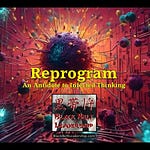The human eye is a wonder of creative complexity.
The organ responsible for our sight is incredibly powerful. Each eye contains around 107 million light-sensitive cells that can detect and distinguish over 10 million colors and up to 500 different shades of grey.
In terms of computational power, our eyes can perceive and process about 36,000 bits of information each hour. That’s the equivalent of viewing 36,000 high-quality photos every hour, or ten images a second.
If we compare the human eye to a digital camera, the highest-resolution cameras available today pale in comparison to the eye’s 576-megapixel capability. Plus, no digital camera can match the eye’s innate ability to change its focus up to 50 times per second.
The human eye has over 2 million working parts. It also contains the only tissue in the body with no blood vessels, the cornea. The Iris, the colored part of the eye, has 256 distinct features. Human fingerprints have only 40.
Interestingly, the eye remains the same size from birth to death. Each eye weighs just under one ounce, with 80% of its composition a jelly-like substance called vitreous humor.
The eyes see the world upside down. As images pass through the eye to the retina, the images are inverted. Up is down and down is up. As the brain processes the information passed through the optic nerve, it flips the inverted image so we see the world right-side up.
Each eye also has a blind spot. It’s an area where the optic nerve exits the eye and no light-sensitive cells are present. There’s a powerful leadership lesson here, but that’s a topic for another day.
A couple of related fun facts…
The muscles that control the eyelids and blinking are the fastest in the body. Perhaps that’s because we, on average, blink 15-20 times a minute during our waking hours each day. Our eyelashes, which help protect our eyes from contaminants, have an average lifespan of four to five months.
Our eyes produce three types of tears. Basal tears lubricate our eyes. Reflex tears wash away irritants. Emotional tears are triggered by strong emotions and contain unique proteins and hormones. On average, we make 15-30 gallons of tears a year.
Newborn babies cry without tears until they are somewhere between 4 to 13 weeks old.
Our eyes give us the ability to see.
But are we really seeing?
Eyesight is defined as a person’s ability to see. The term 20/20 vision is used to describe normal vision acuity. It’s a measurement of clarity and sharpness. A person with 20/20 vision can see the same amount of detail at 20 feet as the average person with normal vision.
If our eyesight is impaired, doctors can prescribe corrective lenses (glasses or contacts) or surgery to improve the clarity and sharpness of our vision. The two most common impairments are myopia and hyperopia. Both of these can impact the quality of our sight.
Nearsightedness (myopia) refers to the ability to see objects close-up, but distant objects appear blurry. Farsightedness (hyperopia) is the ability to see distant objects clearly, but objects nearby appear blurry.
But there’s another type of visual impairment we should be aware of. Optometrists can’t detect it, even though it plagues millions of people around the world.
It’s visualization, seeing without seeing.
Vision is defined as the faculty or state of being able to see. It’s also defined as the ability to think about or plan the future with imagination or wisdom, or a mental image of what the future will or could be like.
Perhaps a better definition is the ability to interpret meaning and insight from what we see.
This happens more often than we may believe.
Life often reveals itself to us through what we see. Yet, how often do we fail to interpret the meaning and insight of what we are seeing so we can apply it to our lives?
About a year ago, my wife was using a circular saw to cut some 2x4s for a project. She was having trouble aligning the blade with the marks she had made on her board. In an effort to help her, I pointed with my finger where she needed to be looking as she cut.
But, seeing without seeing the proximity of my finger to the spinning blade, I sliced my finger open, resulting in a trip to the Urgent Care Center and getting stitches.
One of the major causes of auto accidents is driver carelessness, not being visually aware of one’s surroundings. How often do we find ourselves driving down the road, oblivious to everything going on around us, and failing to see a car change lanes, stop unexpectedly, or pull out in front of us?
So, let me ask the question again.
Life often reveals itself to us through what we see. Yet, how often do we fail to interpret the meaning and insight of what we are seeing so we can apply it to our lives?
We see it, but do we really, truly see it yet?
In business (and in life), the answer to a problem we’re facing may be right in front of us. But if we see it without taking the time to analyze, reflect, or otherwise think about what we’re seeing and how to apply it, does the answer remain elusive, just outside our reach?
Our eyesight enables us to read the words of amazing men and women who have taken the time to share their insights, wisdom, and life experiences with us in the form of an article or a book. Our eyes interpret the letters, words, and phrases as we scan each page.
Vision happens when we take the time to contemplate, evaluate, and consider what we have read and learned so we can apply it to our lives in some favorable way. It’s the understanding that happens when we interpret meaning and insight from the written word.
And Vision, in the context we are considering it, isn’t just a sight thing.
In the New Testament, Jesus taught the people through parables, stories that teach a moral lesson. In Mark 4:9, he reminds his listeners, “He who has ears to hear, let him hear.”
What was he saying?
Just like we see without seeing, we often hear without hearing.
When we aren’t actively listening to the words and phrases being spoken, we fail to engage our subconscious mind to help us interpret, evaluate, and apply what we are hearing. When we are disengaged, distracted, and not fully engaged in the listening process, we fail to pick up on those Aha moments that could change our lives for the better.
Archimedes faced a dilemma in ancient Greece. The king had given a lump of gold to a merchant to have a solid gold crown made. Upon delivery, the king feared the merchant had not used all the gold, but mixed the gold with silver, and kept the balance for himself.
The King tasked Archimedes to solve the riddle. Archimedes could see the crown, but he couldn’t see a way to test the king’s hunch. For days he pondered on this problem and one day, as he had done many times, he stepped into his bathtub to bathe.
As he saw the water spill over the edge of his tub, he also saw the solution. He ran naked through the streets shouting, “Eureka” (I’ve found it) as he ran to inform the king he had a solution to his problem.
Archimedes devised a method to determine the volume of the crown, thus its purity, by the amount of water displaced when submerged. He measured the amount of water displaced by the crown, comparing that to a comparable lump of gold and silver, proving the merchant was a thief and the king’s crown had been mixed with inferior metals.
His eureka moment was when he saw what he saw.
Life often reveals itself to us through what we see. Yet, how often do we fail to interpret the meaning and insight of what we are seeing so we can apply it to our lives?
In psychology, there is a phenomenon referred to as inattentional blindness. This happens when we fail to notice something that is clearly visible because our attention is focused elsewhere. It is, in essence, seeing without seeing. It’s eyesight without vision.
Eyesight is our ability to see.
Vision is our ability to interpret meaning and insight from what we see.
We overcome inattentional blindness (a lack of vision) by prioritizing our focus, minimizing distractions, and being proactive in living in the moment. When we allow our thoughts to become hijacked by past regrets or future anxiety, we fail to be present in the moment.
We become blind to the lessons life is trying to teach us.
Let me leave you with some action steps so you can not just see, but really, truly see.
First, pay attention to your surroundings. Be present in the moment, intentionally aware of what you’re seeing, hearing, or experiencing. The past is history, the future is a mystery, so this moment, right now, is the only moment you have.
Secondly, look for cues and clues. Approach each moment, and each day, with an expectation to learn. When you ask yourself, “What can this moment teach me, reveal to me, or show me?” you open your mind to look for cues and clues.
Remember that life often reveals itself to us through what we see. Yet, how often do we fail to interpret the meaning and insight of what we are seeing so we can apply it to our lives?
Thirdly, ask questions and seek clarity. As cues and clues reveal themselves, ask yourself, “How do I apply this?” When we remain curious, our subconscious remains open to examine the What-Ifs that life is revealing to us. It helps us piece together the cues and clues so they form a cohesive picture of the answer we are seeking.
It’s your brain’s way of asking, “Do you see it yet?”
Every hour, we are taking in 36,000 bits of information through our eyes.
Within those 36,000 bits of information are the answers we seek to help us move forward, get unstuck, learn and grow, or scale our business. We are seeing the information as our eyes (and our other senses) take this information in.
The more important question is this.
Are we seeing what we need to see to glean the cues and clues that lead us to the answer we seek?
Vision is the ability to interpret meaning and insight from what we see.
It’s gleaning understanding that leads us to our Eureka moments.
Do you see it yet?
Or are you living life seeing without seeing?












Share this post